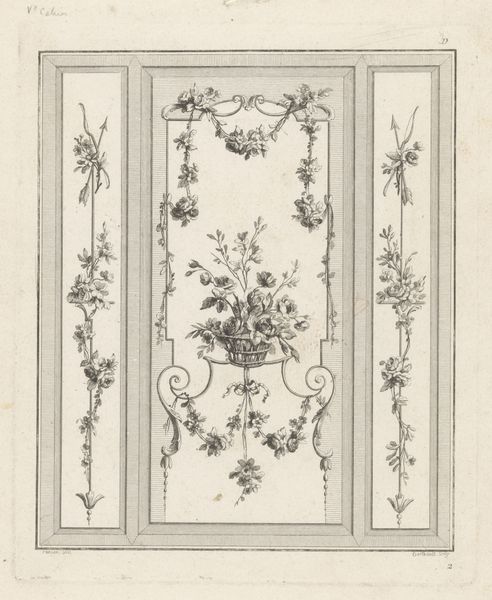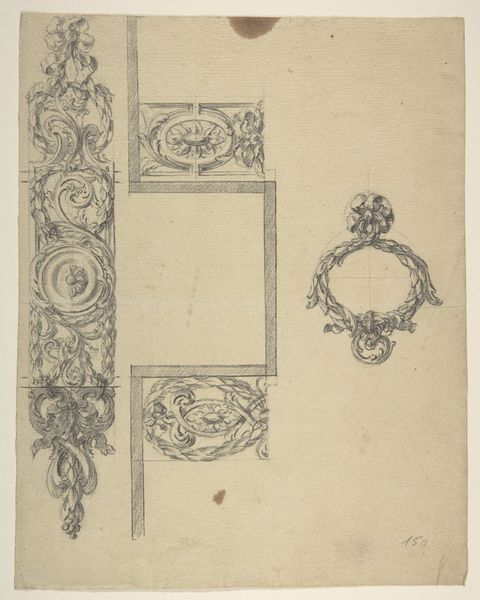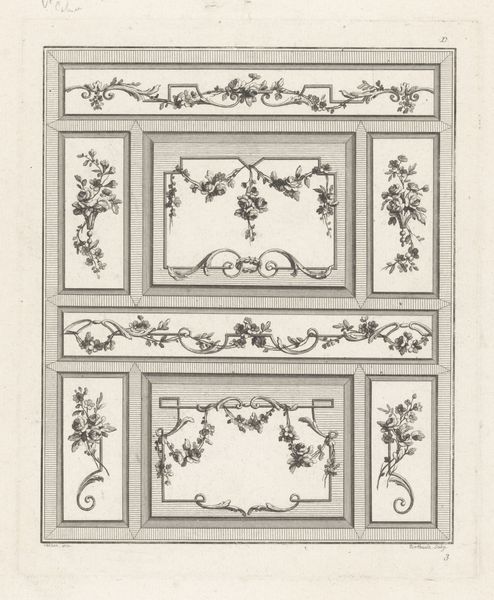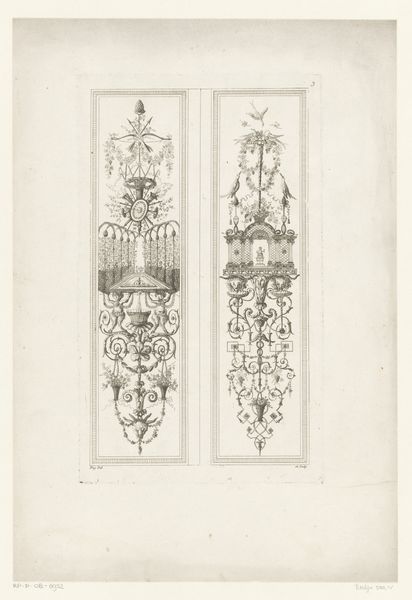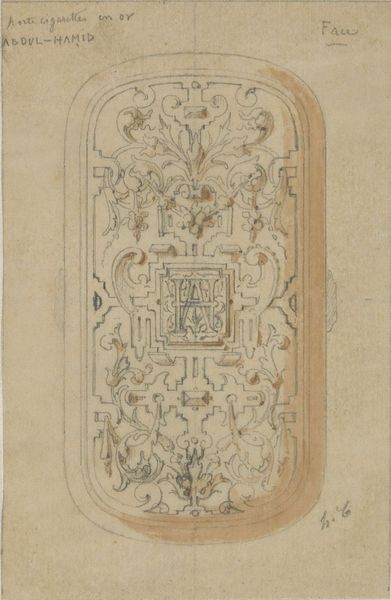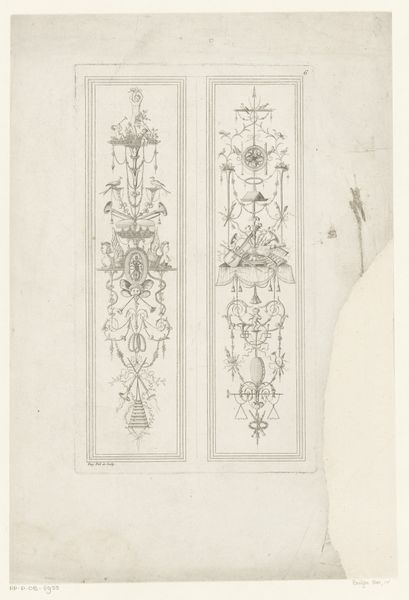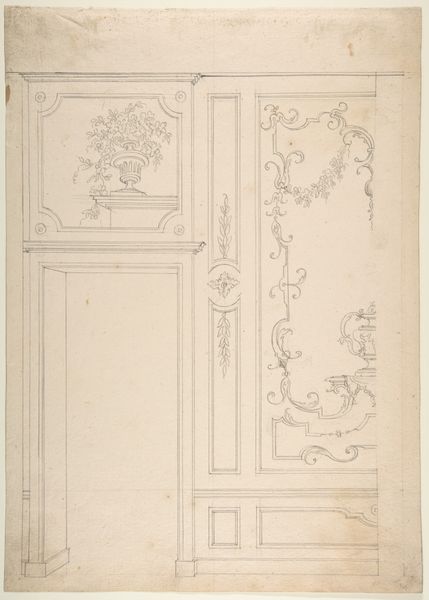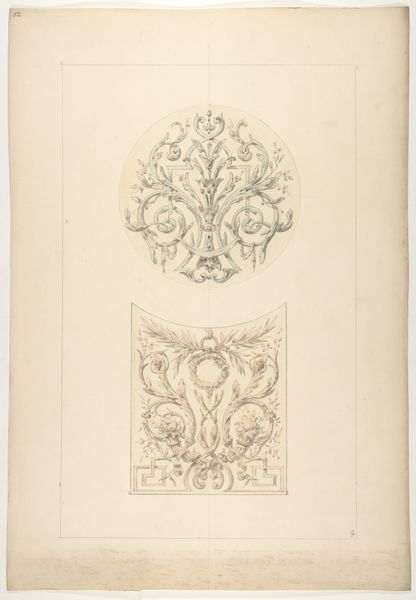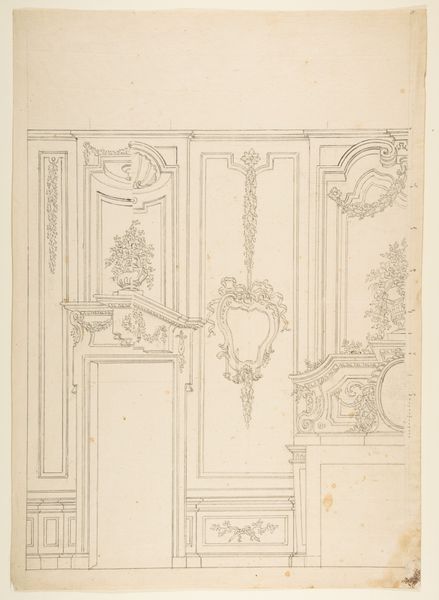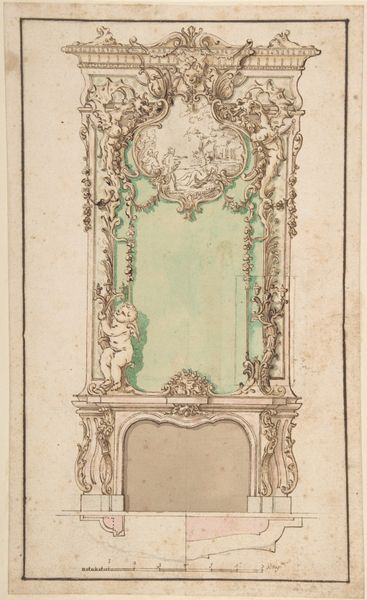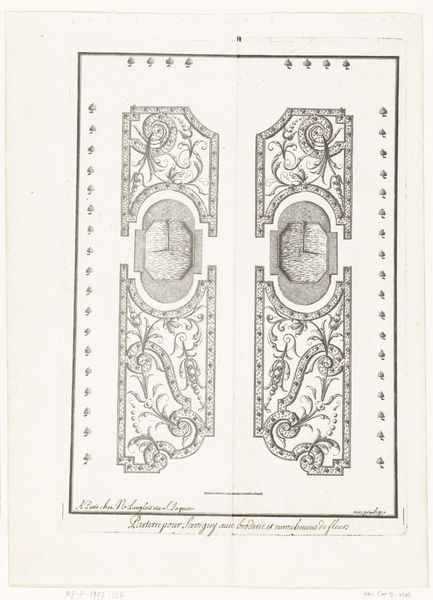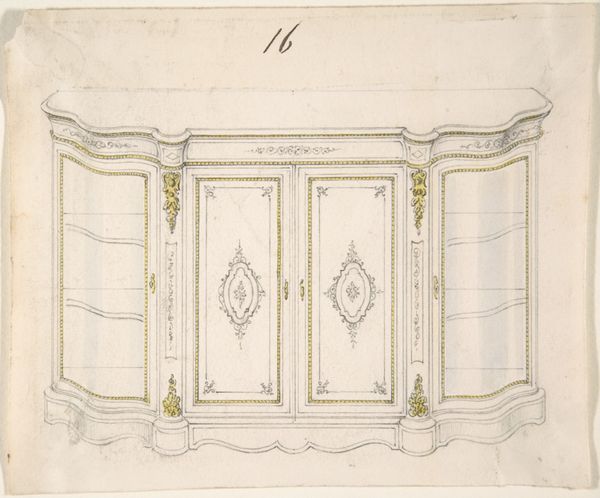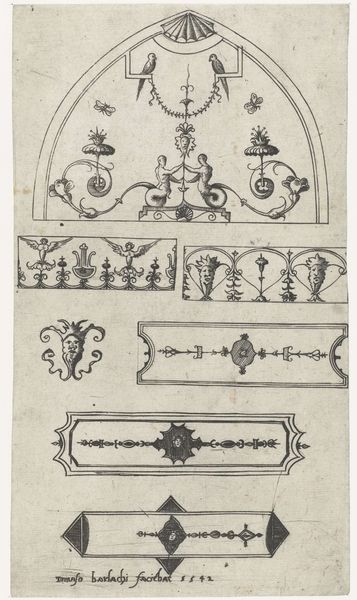
Ontwerp voor een deel van een wand voor de zijkamer van Van Hasselt c. 1752 - 1819
0:00
0:00
#
simple decoration style
#
architectural sketch
#
natural stone pattern
#
aged paper
#
toned paper
#
homemade paper
#
muted colour palette
#
parchment
#
nude colour palette
#
golden font
Dimensions: height 158 mm, width 142 mm
Copyright: Rijks Museum: Open Domain
Editor: Here we have Jurriaan Andriessen’s “Ontwerp voor een deel van een wand voor de zijkamer van Van Hasselt," which translates to “Design for a section of a wall for the side room of Van Hasselt,” dating from about 1752 to 1819. It's a delicate sketch. The muted colors and precise lines give it such a calming feeling. What can you tell me about this work? Curator: It’s interesting to consider this piece within the broader context of interior design and the decorative arts of the period. Wall decorations were a marker of social status, a public display of wealth and taste. The fact that this is a design, rather than a finished piece, gives us insight into the artistic process and the client-artist relationship. How might the "Van Hasselt" family have used this room and how does that relate to their position in society? Editor: So, it’s not just art for art’s sake; it’s integrated into their lifestyle. It seems so intentional. Was there a specific political message conveyed through designs like this? Curator: It's less about explicit political messaging and more about aligning with prevailing aesthetic and cultural values. Think about the Enlightenment emphasis on reason and order - do you see echoes of that here? The symmetrical arrangement, the classical motifs in the medallions… It reflects a desire to present oneself as cultivated and knowledgeable in a visual language understood by their peers. The rise of public museums also shaped tastes and encouraged displaying cultural capital at home. Editor: That makes sense! The classical imagery does suggest a certain level of education and refinement. I hadn't thought about the museum connection so early on, that is very insightful. Curator: Exactly. And understanding that connection is crucial for interpreting this design not merely as decoration, but as a statement of identity within a specific historical and social milieu. The toned paper and simple decorations speaks to me as well. Editor: I see this work in a totally different light now, seeing it more about making a statement, and aligning with your time's cultural taste. Curator: Indeed. And, the art market always leaves its marks. Now you see how this wall design served not just as a visual element, but as a part of a larger, evolving conversation about taste, status, and power?
Comments
No comments
Be the first to comment and join the conversation on the ultimate creative platform.

